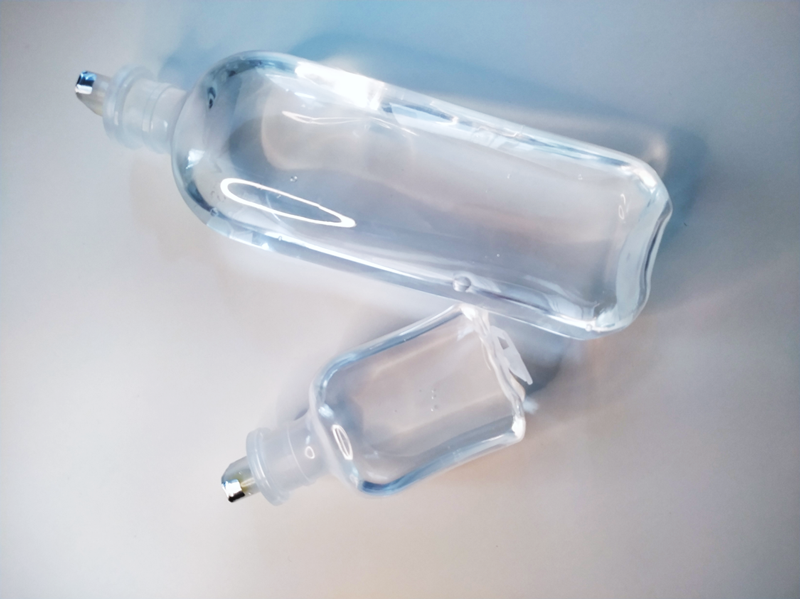Parenteral drugs use means other than oral administration and usually involve injecting the drug directly into the patients. This category includes all drugs that are administered either via injection or infusion.
These products meet countless needs in the health sector: their method of administration ensures the desired effect is obtained quickly and safely, making them particularly suitable for use in emergencies. The parenteral route also allows administration of a number of products, such as insulin, peptide derivatives and heparin that would not be optimally assimilated by oral means, because transit through the stomach and intestine would inactivate or destroy their active ingredients. In addition to drugs, the parenteral route can also be used to administer nutritional solutions for patients who are unable to eat normally.
The parenteral route provides patients with a broad range of products meeting a wide variety of needs. However, because parenteral drugs are rapidly absorbed, they must be subjected to a series of extremely strict controls.
Types of parenteral products
Parenteral products are administered in several ways. The main ones are:
-
Intravenous: drugs are injected directly into the patient's vein, normally in aqueous or hydroalcoholic solutions, and are assimilated rapidly. If large quantities of a drug (volumes greater than 50 ml) need to be infused, an IV drip is generally used. Intravenous injections are administered by specialized personnel and it is important they be dosed carefully, because drugs injected intravenously have 100% bioavailability. Intravenous drugs are provided in ready-to-use vials or ones containing powder that is re-hydrated prior to injection.
-
Intramuscular: in intramuscular injections, patients are administered drugs in an aqueous (which are absorbed quickly) or oil solution, (which require longer absorption times), so they act more slowly, but for longer periods of time. This type of injection is usually administered by experienced personnel since it can be painful and can cause bacterial contamination or nerve injury if administered incorrectly.
-
Subcutaneous: this route is commonly used for certain types of drugs in aqueous solution, such as insulin or vaccines. The product is injected into the fatty layer immediately beneath the skin, is assimilated relatively slowly and can be administered only in small quantities (up to 2 ml). The main advantage of this type of injection is the ease with which it can be performed even by unskilled personnel or by patients themselves. This makes the subcutaneous route particularly suitable for drugs requiring frequent administration. Subcutaneous injections can be administered using classic or pre-filled syringes, or with special pen devices that allow the patient to dose the product easily, avoiding errors and waste.
All parenteral products must be sterile, regardless of their method of administration. The product contained in the vial or syringe may either be ready to use or need to be diluted through the addition of water or other additives for injections. In both cases, the drug must be contaminant-free, particulate-free, and single-phase when ready for injection.

Safety of parenteral products
International regulators like the FDA , MHRA and EMA require that 100% of all injectable drugs be tested, since the specific route of administration of these products would make the use of drugs with non-compliant characteristics extremely dangerous.
The Container Closure Integrity Testing (CCIT) method can be used for these products with different techniques:
-
Vacuum Decay Method: VDM verifies that the container has no micro-holes, allowing it to effectively protect the product contained inside during its entire shelf-life.
-
Headspace Gas Analysis: HGA checks that there are no greater-than-expected concentrations of certain gases in the product's headspace, which could indicate that the product has been contaminated.
-
Visual Inspection: VI detects defects in the packaging and its contents, identifying the presence of scratches or inclusions in the container and foreign objects or particulate defects in its contents.
All these techniques are non-destructive and can be used to effectively test 100% of production.
The latest revision of USP <1207> states that deterministic methods of analysis—such as HGA and VDM—are preferable to probabilistic methods for CCIT. Although Visual Inspection is a probabilistic method, it can also be very useful for such inspections. The application of neural networks to this technique greatly increases its ability to provide accurate, reliable, and repeatable results.
Bonfiglioli Engineering solutions for parenteral product testing
Bonfiglioli Engineering machines perform high-speed tests on parenteral products, analyzing 100% of production rapidly and accurately, guaranteeing full compliance with international standards.
Each machine is custom designed to meet the customer’s needs, adapting to all kinds of parenteral products regardless of their dimensions and characteristics; this level of flexibility allows us to provide effective and efficient testing for all your products.
Bonfiglioli Engineering also manufactures combined machines, using more than one testing technology, that can perform different types of tests to guarantee even more guarantee better results. These machines combine the potential of different test methods to identify non-conforming products in a wide variety of defect categories, minimizing the risk of selling products that are potentially harmful.
Read our Test Methods to learn more.

